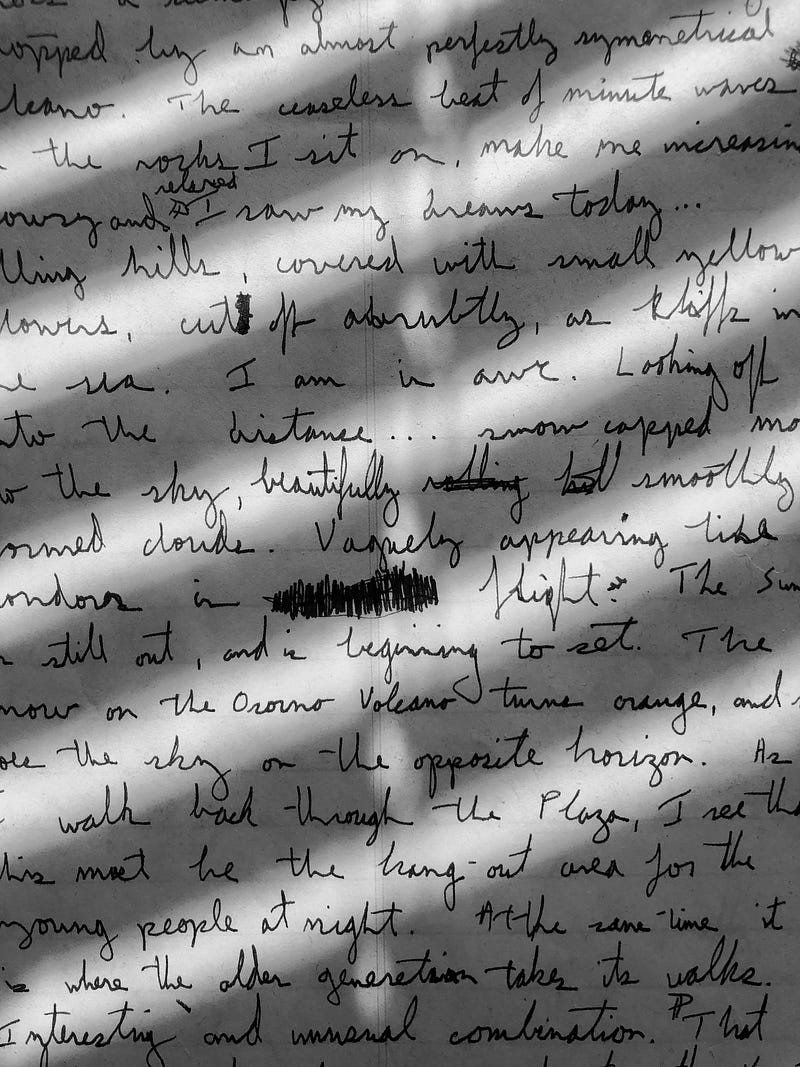What Your Handwriting Reveals About Your Personality Traits
Written on
Understanding Handwriting Analysis
The first time I heard someone claim they could infer my shy nature from the way I formed my “t’s,” I was skeptical. I had little knowledge about graphology— the study of handwriting analysis. I questioned how someone could assess my personality from a mere letter, especially since my writing could vary on different days or when I was rushed.
However, it turned out they were right. Each aspect of my writing—from the angle of my letters to the pressure of my pen, and even how I dotted my “i’s” and crossed my “t’s”—painted a surprisingly accurate picture of my personality. Many experts in graphology assert that you can uncover numerous traits by examining someone’s handwriting.
Handwriting as a Form of Expression
Handwriting serves as a unique form of non-verbal communication, much like body language. To explore this further, I decided to experiment with my friends using a book by a handwriting analyst, which turned out to be both entertaining and enlightening.
How to Analyze Handwriting
To begin analyzing handwriting, gather samples of your best writing. These don’t need to be flawless; in fact, more spontaneous pieces, like grocery lists or notes, often yield better insights.
Keep an open mind during this process. Remember, unless you’re evaluated by a trained professional, the analysis can be subjective and is meant for fun. Have a friend or an expert assess your handwriting for you.
Pay Attention to Letter Size
Observe the size of your letters. Typically, extroverted individuals tend to write larger letters, while introverts usually write smaller ones. If your writing is neither particularly big nor small, it may indicate a balanced focus without leaning too far in either direction.
Pen Pressure Insights
Consider the pressure you apply to the pen. Light pressure might suggest you are empathetic or possibly indifferent towards the subject matter. Average pressure indicates seriousness, while heavy pressure may imply stress or tension related to what you’re writing about.

Spacing Between Words
Next, think about the spacing between your words. Crowded writing could indicate a preference for social interactions but may also suggest anxiety about solitude. Conversely, more spaced-out words usually reflect a desire for independence.
If you connect your letters, it may reveal a logical mindset that relies on facts, while disconnected letters might suggest impulsiveness and creativity.
Signature Analysis
Your signature can also provide clues about your personality. An illegible signature may indicate a private nature, while a clear one suggests confidence. If the first letter of your signature is disproportionately large, it might reflect self-centeredness.
Slant and Shape of Letters
The slant of your handwriting is telling, too. A right slant often signifies sociability, whereas a left slant may indicate shyness. Significant fluctuations in slant throughout a piece may suggest dishonesty.
The shape of your letters matters as well. Pointed letters could suggest intelligence mixed with suppressed anger, while rounded letters often indicate creativity.
Loops and Their Meanings
Loops in cursive writing have various interpretations. A large loop can signify a wide social circle, while a smaller one may denote caution in relationships.
The loop in your lowercase “l” can reveal your comfort with spontaneity or a tendency to overthink.
Examining Your 'o's and 'e's
Closed “o’s” might indicate introversion, while open ones suggest sociability. Narrow “e’s” can show skepticism, whereas larger “e’s” often reflect open-mindedness.
Crossing Your 't's and Dotting Your 'i's
The manner in which you cross your “t” can reflect your energy levels—an elaborate cross indicates enthusiasm, while a short one may suggest apathy. Similarly, how you dot your “i” can reveal your imagination or organizational skills.
Mood Variability in Handwriting
Many professionals believe that handwriting mirrors your subconscious. Consistency in handwriting often indicates emotional control, while variability could arise from mood fluctuations or external factors.

Can Handwriting Influence Mood?
Some assert that since handwriting reflects mood, altering it could change how you feel. This concept is at the heart of graphotherapy, which aims to break negative patterns tied to handwriting.
Conclusion and Final Thoughts
While I'm not a professional handwriting analyst, my curiosity has led me to share these insights into handwriting analysis. This is merely a glimpse into a much broader field where experts utilize sophisticated methods to examine character, intent, and emotional states through handwriting.
References and Further Reading:
- We All Scrawl, But the Way You Form Your Letters Says a Lot About Your Personality
- 13 Telling Things Your Handwriting Reveals About Your Personality
- What Your Handwriting Says About You